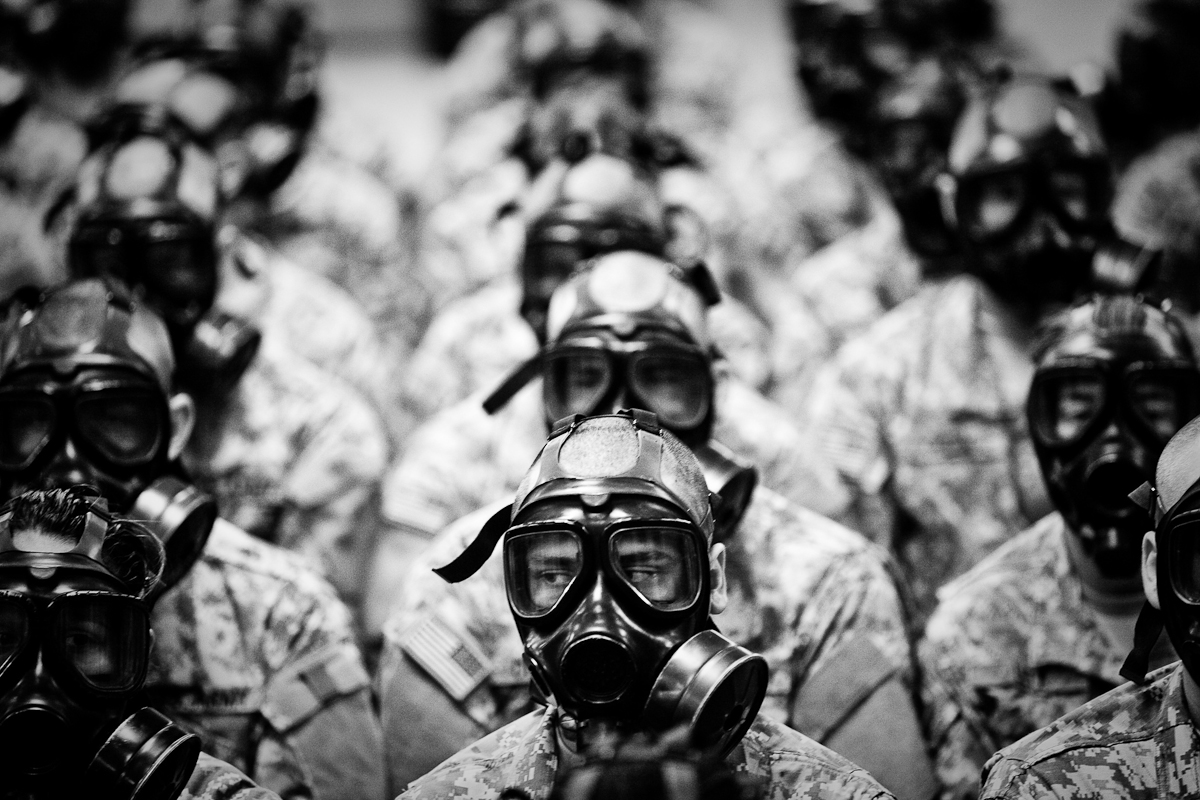War photography is a form of photojournalism recording armed conflict. It is a medium with has existed since the mid 19th Century – the American Civil War of 1861-1865 was the first war to be photographed extensively. War photography covers all ranges of armed conflict; the battle; relief effort; soldiers; civilians; weaponry; border control; landscape; and aftermath of battle.

The way we view war has been influenced greatly since the invention of photography. People have more access than ever to the events.
War photography is seen as an incredibly challenging form of photojournalism which involves great bravery, in often volatile and emotionally distressing environments. It is a highly respected role, because photography is an effective means of communicating to the general public the events of the war. Unlike radio or news reporters, a photographer is required at all times to be close to the action, and the visual evidence that photographs provide, give a much more reliable and objective viewpoint (assuming the photograph is genuine). War photographers are therefore very influential, and in the 20th Century many respected magazines such as ‘Life Magazine’ who covered conflicts such as the Korean, Vietnam and the First Indo-China War, emphasis was actually placed on the photograph, and photographs were prioritised over written reports, meaning that reporters had to base their writing around the photographs. Photographs are much easier to view and often captivate the viewers attention much easier then reports do, because they provide an instant interpretation and recognition of events. The Vietnam War in Particular was seen as a milestone for War Photojournalism. Visual journalist had complete access to cover the war. The worldwide audience were shocked and disgusted by what they witnessed.

War Photographs look at all aspects of the War, not just the battle. A good photographer will produce work that is empathetic.
![]()
Iconic Photographs like this changed how people viewed the Vietnam War. If public opinion was not influenced by what they saw, then America’s involvement in the war may have been dramatically different.
War photography is often very dangerous, and nowadays photojournalists covering war are extremely vulnerable to deliberate, politically motivated attacks. Traditionally photojournalists in war zones were considered as neutrals, similar to the medical assistants, whose role is report the war from a balanced, well-rounded perspective. However as many cases in the late 20th Century and early 21st Century show, War Photographers have since been deliberate targets of attack themselves, as military and national leaders started to appreciate the influence that photojournalists can have over the war, and can potentially obscure, or the organisation they work for, can obscure images to manipulate the events and produce a bias. Unfortunately therefore, photojournalism is now a very dangerous role to be in, and their is an extremely high death and kidnap rate. The Arab Springs of 2011 highlighted the extent of vulnerability of journalists and photojournalists alike. Many photojournalists have been kidnapped or killed since reporting on the events. This has forced journalists of all disciplines to re-evaluate their approach to conflict, as fears for safety are higher than ever.

Two time Pulitzer Prize Finalist Chris Hondros was killed whilst covering the Libyan Civil War in mortar attack by Pro-Gadaffi forces. Fellow Photojournalist Tim Hetherington was also killed. Is such a cost of modern photojournalism worth such a loss?
